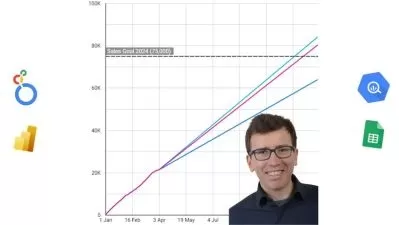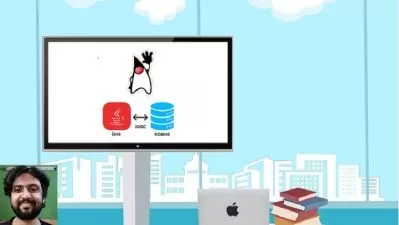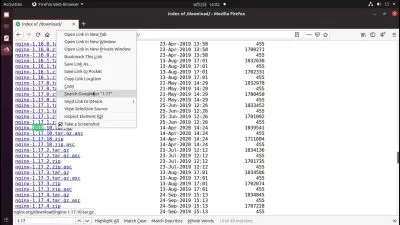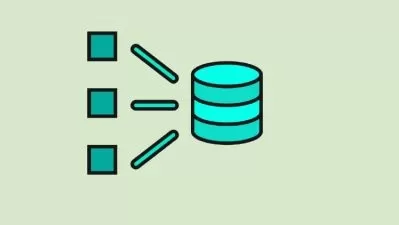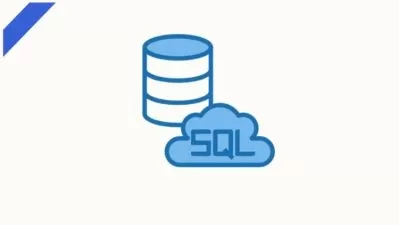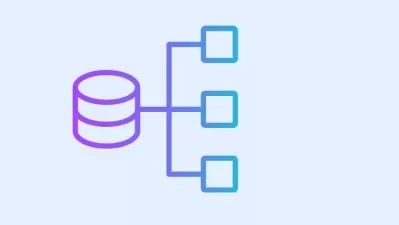The Complete SQL and MySQL Course - From Beginner to Expert
Holczer Balazs
6:45:07
Description
Learn the Basics of Managing Data with SQL - Basics, Transactions, Views, Pages and Stored Procedures
What You'll Learn?
- understand the basic concepts of databases
- get a good grasp of SQL and MySQL queries
- understand database management systems (DBMSs) and database languages
- understand table manipulation
- understand pages
- understand views
- understand strored procedures
- understand the data structures (B trees and B+ trees) behind databases
Who is this for?
What You Need to Know?
More details
DescriptionIn this course you can learn the fundamental basics of data management with SQL and MySQL. Learn everything that you will need to make queries with the most popular data manipulating programming language - SQL. This course is about SQL commands in the main. You will learn the basics of queries. Let's take a look at what you are going to learn in this course:
Section 1 - Setting up The Environment:
setting up the environment
installing MySQL server
Section 2 - Database Theory
what are databases?
what are database management systems (DBMSs)?
what are database languages?
the data structures (B-trees) behind databases
procedural and non-procedural programming languages
Section 3 - Creating and Manipulating Tables
basic data types (integers, floating point numbers and characters)
enums and dates
how to create databases?
how to insert and remove items?
how to update existing items or database tables?
Section 4 - Basic SQL
basic SQL and MySQLÂ commands
select, where and wildcards
logical operators
ORDERÂ BY and GROUP BYÂ commands
Section 5 - Multiple Tables
joining multiple database tables
inner join
left and right join
Section 6 - Database Normalization
what is database normalisation?
first normal form (NF1)
second normal form (NF2)
third normal form (NF3)
Section 7 - Subqueries:
advanced SQL and MySQL
what are subqueries?
correlated and non-correlated subqueries
Section 8 - Transactions
what is database locking?
the ACID principles
COMMIT, ROLLBACK and SAVEPOINT
Section 9 - Views
what are views and why are they crucial?
creating views
updating views
dropping views
Section 10 - Indexes and Constraints
what are indexes and why to use them?
primary keys and foreign keys revisited
composite keys
what are constraints?
check constraints
unique constraints
default constraints
Section 11 - Data Structures Behind Databases
what are pages?
the basic concept of paging in operating systems
external memory and internal memory
B tree data structure
B+ tree data structure
Section 12 - Stored Procedures
what are stored procedures?
variables
loops
conditional statements
cursors
Learning the fundamentals of SQL and MySQL is a good choice and puts a powerful tool at your fingertips. SQL is easy to learn as well as it has excellent documentations.
The most important fact about SQL that it is used in almost every field from software engineering to financial analysis so understanding the concepts and basic language features can prove to be very marketable.
Thanks for joining the course, let's get started!
Who this course is for:
- This course is mean for newbies who are not familiar with SQL syntax or just want to refresh the knowledge
In this course you can learn the fundamental basics of data management with SQL and MySQL. Learn everything that you will need to make queries with the most popular data manipulating programming language - SQL. This course is about SQL commands in the main. You will learn the basics of queries. Let's take a look at what you are going to learn in this course:
Section 1 - Setting up The Environment:
setting up the environment
installing MySQL server
Section 2 - Database Theory
what are databases?
what are database management systems (DBMSs)?
what are database languages?
the data structures (B-trees) behind databases
procedural and non-procedural programming languages
Section 3 - Creating and Manipulating Tables
basic data types (integers, floating point numbers and characters)
enums and dates
how to create databases?
how to insert and remove items?
how to update existing items or database tables?
Section 4 - Basic SQL
basic SQL and MySQLÂ commands
select, where and wildcards
logical operators
ORDERÂ BY and GROUP BYÂ commands
Section 5 - Multiple Tables
joining multiple database tables
inner join
left and right join
Section 6 - Database Normalization
what is database normalisation?
first normal form (NF1)
second normal form (NF2)
third normal form (NF3)
Section 7 - Subqueries:
advanced SQL and MySQL
what are subqueries?
correlated and non-correlated subqueries
Section 8 - Transactions
what is database locking?
the ACID principles
COMMIT, ROLLBACK and SAVEPOINT
Section 9 - Views
what are views and why are they crucial?
creating views
updating views
dropping views
Section 10 - Indexes and Constraints
what are indexes and why to use them?
primary keys and foreign keys revisited
composite keys
what are constraints?
check constraints
unique constraints
default constraints
Section 11 - Data Structures Behind Databases
what are pages?
the basic concept of paging in operating systems
external memory and internal memory
B tree data structure
B+ tree data structure
Section 12 - Stored Procedures
what are stored procedures?
variables
loops
conditional statements
cursors
Learning the fundamentals of SQL and MySQL is a good choice and puts a powerful tool at your fingertips. SQL is easy to learn as well as it has excellent documentations.
The most important fact about SQL that it is used in almost every field from software engineering to financial analysis so understanding the concepts and basic language features can prove to be very marketable.
Thanks for joining the course, let's get started!
Who this course is for:
- This course is mean for newbies who are not familiar with SQL syntax or just want to refresh the knowledge
User Reviews
Rating
Holczer Balazs
Instructor's Courses
Udemy
View courses Udemy- language english
- Training sessions 94
- duration 6:45:07
- English subtitles has
- Release Date 2024/05/04










